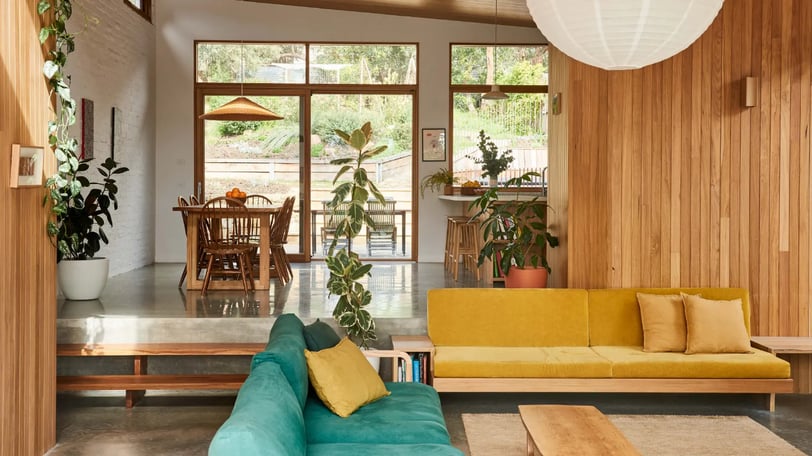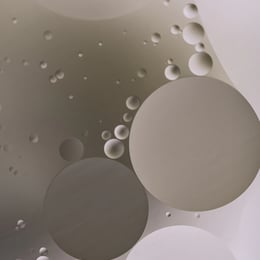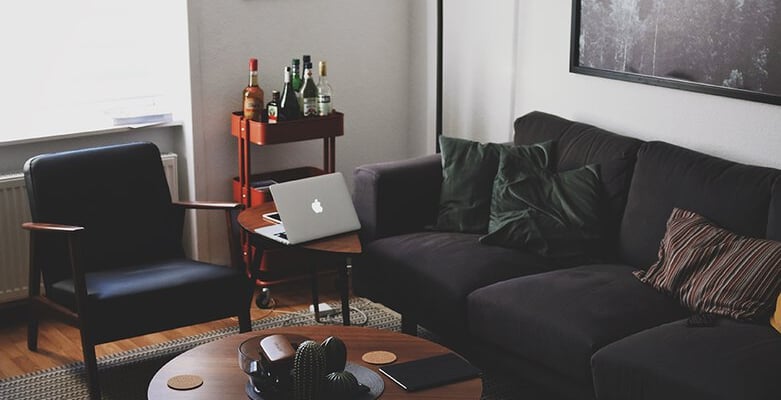Build Yourself a Sustainable Adobe
Approach to Sustainable Interiors – steps to consider while renovating your home
Ar.Ruchi Shah
11/21/20236 min read


As a designer who reflects sustainable lifestyle, my major challenge in renovating a house is to make the space more environmentally conscious from the beginning.
Being a city dweller and a nature lover there is a constant need to intertwine interior space with natural elements and warm aesthetics. We all need a home to acknowledge contemporary living needs while responding to our responsibility towards the environment.
In keeping with this idea, we can dream of living in a green home by implementing small ideas to make your current abode a little more planet friendly. Knowledge and awareness are the most crucial part on making mindful decisions. So, let us dive into the importance and needs for a sustainable home.




What springs to mind when you hear the words “sustainable interior design”?
Reclaimed wood, earthen textures, bamboo furniture, exposed walls?
Sustainable interior design is about adopting an ecofriendly practice for your home that engages with your lifestyle and personality. It “seeks to reduce negative impacts on the environment, and the health and comfort of people, thereby improving building performance. The basic objectives of sustainability are to reduce consumption of non-renewable resources, minimize waste, and create healthy, productive environments.” - GSA
Long story short, sustainable interior design is consciously creating a home that is focused on:
“Study Nature, love Nature, stay close to Nature. It will never fail you.”— frank Lloyd
Describe the feeling you want your home to express!
If simple, neutral tones and uncluttered is your jam, your space fits the minimalist mode. But if you prefer to decorate it with bold color's, an abundance of art, plants, and unique furnishings, you can do that, too.
Remember eco does not have to mean 'expensive' or ‘green plants’ or ‘minimal interior’ - it can be as simple as revamping an old table or chair that would otherwise have been sent to landfill. Being mindful on the material and application, one can decorate the house to suit their Style, but how do you approach sustainable interior design?
So once you have set your mind on the décor theme lets go ahead to understand more in detail.


Eco-friendly materials one can use to make a beautiful timeless interior.
Let’s design a house you don’t get bored of! Timeless designs with durable furniture will always be worth preserving and will have more price value. So, what materials can be used to make an interesting décor that fits your style. There are plenty of options to choose from.
Plan your decor to accommodate local materials and traditional crafts. The sustainable design employs local timbers, stone, products, sourced from within a 100 kilometre radius reducing the transport fuel which is a major contributor to climate change. Similarly, the art and artefacts can be carefully curated to showcase local arts and artisans. This gives an upliftment to the small business of your own country.
Materials for various surfaces as an Indian resident I can opt from the following-
Flooring of good durability and strength –
1. Local Kadappa/Sandstone/Slate stone or granite for more earthen feel to the space.
2. Go for local marbles made in your country, rather than choosing Italian marbles.
3. Engineered wood floor is sustainable than solid hardwood flooring because it uses less wood per plank.
4. Terrazzo flooring, it’s made from recycled materials like marble scraps, glass chips, and cement.
5. IPS flooring is made from: Cement, Sand, Stone aggregates, Other organic components, Marble powder.
6. Terracotta or ceramic tiles are considered eco-friendly as they are made from natural clay and are not treated with any harmful chemicals or synthetic materials.



Wall surfaces and partitions
1. Wood/veneer panelling with water base polish
2. Lime plaster texture wall finish instead of chemically infused paints
3. Brick wall - Fly ash (made from industrial waste) or thin sun-dried brick wall
4. Wallpaper - Glasscloth wallpaper, recycled paper, bamboo or linen wallpaper
5. Clay tiles / mosaic chip tiles wall cladding
6. Rattan/cane weaving sheets or Bamboo skin wall cladding products
7. Cork boards are a renewable material that doesn't require cutting down trees
8. Fibre Cement boards. They are biodegradable and made from rock and other natural materials
9. Glass partition reflects and absorb solar energy and are 100% recyclable
Ceiling surfaces
1. Exposed ceiling. This saves on material resources. Also exposed ceiling will give you larger height to the space and can add a character to the house or office if well organized.
2. Gypsum board – However if you want a clean look ceiling, gypsum is a sustainable material that can be recycled an infinite number of times. One can avoid acrylic paint on ceiling and go for more ecofriendly paint options.
3. A lot of wall surfaces can also be used for the ceiling to create a homogeneous look. Like Veneer, lime wash, bamboo sheet, wallpaper, etc
Before using and of the products it is important to check the certification of green building material, its durability and strength



So Let’s resurface on what to Avoid
Avoid use of laminates, ACP’s, Acrylic sheets, PVC panels (made of plastic), concrete furniture or cladding, mirrors, etc as they are non-biodegradable mass manufactured using more of plastic and generating large amount of fossil fuels.
These products are harmful to our health and environment. For example, the mining and extraction of these materials consumes a lot of energy and raw materials.
A majorly used item in all houses is wall and ceiling paints or PU finish on furniture. Paint products contain high levels of VOCs (volatile organic compounds), which react with oxygen and sunlight to form ozone that contribute to global warming and air pollution.
A longer lifespan for furniture is way more sustainable than just tossing it out.
So, if you have got an old piece of furniture lying around, whether it is made from eco-friendly materials or not, it is way more sustainable to reuse it for as long as you can instead of sending it to the junkyard. This not only cuts down on unnecessary waste but also saves you some money.
For example, rather than discarding an old-fashioned furniture, why not give it a makeover? Get creative and spruce it up with new upholstery, a fresh coat of paint, or whatever tickles your fancy. You can even hunt for cool second-hand finds at thrift shops or flea markets and let your designer work some magic to make it fit your interior style.
Think about it like this: if you build a clay house that only lasts 10 years, even though the material is eco-friendly, you will end up using a ton of labour, energy, and resources to build another one. But if you go for a sturdy stone structure that can stick around for 50+ years you are not only helping build a green planet but also passing down a piece of art and history to future generations.
The longer a product lasts, the friendlier it is to our beautiful planet because it means less waste.


Sustainable Décor idea!! Let’s spruce it up
Recycled Products - Incorporate furniture made on recycled waste such as plastic or metal. There are a lot of niche brands coming up with interesting looking pieces for your décor. This adds a great emotion to the piece.
Renewable energy
Kitchen appliances
Water faucets
LED lights, sensor
Save on air-conditioning, go with fan
Interior décor is an ever-present part of people’s daily lives. The furnishings and finishes with which people surround themselves are part of their personal expression, but these components in people’s homes and work spaces can negatively affect their health.
Address
186 Perin Nariman Street, Bazaar Gate, Ground Floor, near Reserve Bank, Fort, Mumbai 400 001


